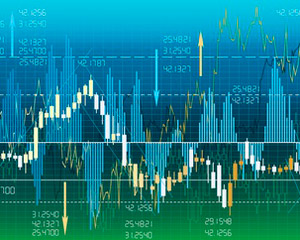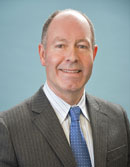
Brexit, Trump and Terrorism. Take all that together, and surprise, surprise, the markets went up.
In the second quarter of 2016, the Toronto stock index closed up 4.6%. The DEX Universe Bond index closed up 2.6%. The S&P500 US index in Canadian dollars closed up 1.9%. All looks pretty good.
Even leaving North America, which has been a treacherous thing to do this year, the EAFE (Europe, Australia and Asia and Far East) index was down just 0.3% – although the index is down 10.4% year to date.
It was a great quarter for precious metals and materials, and it was a very good quarter for ‘safe’ stocks like BCE and Enbridge. Some of the sectors in between struggled a little.
This quarter was a reminder that the stock market can be very resilient. It will bounce back from all sorts of bad news.
In a research study (by Ned Davis Research) of the Dow Jones index in the United States, it showed that strong performance generally follows a major loss day. On average, among all the major losses reviewed, there was 6.7% in average losses on that down day, and the gains on the index following that loss date were as follows:
| 22 days after | 63 days after | 126 days after | 253 days after |
| +3.7% | +5.2% | +8.9% | +13.9% |
One of the major reasons for the numbers above is that including all the bad days, the long term average annual return of the S&P500 has been 10% a year. The long term average for the TSX is closer to 9% a year. Over time, stock markets go up and that is why when you decide to sit in cash for investment reasons, you are often swimming upstream.
The key message is that it is better to stick to your overall investment plan before, during and after a major event, than to try to make major asset mix changes to outperform. It is too easy to be left on the sidelines as the markets rise again.
This quarter, most TriDelta clients were up between 2% and 3%.
Our TriDelta High Income Balanced Fund had a very good quarter – up 7.9%.
The best investments in our Pension portfolio models were Mondelez and General Mills, both up 14% during the quarter.
The best investments in our Core Growth portfolio models were Tahoe Resources up 49% and Barrick Gold up 31% during the quarter.
The worst investments in our Pension portfolio models were Computer Programs and Systems (discussed below, which we bought after it had already fallen a little), down 23%, and Apple down 11% on the quarter.
The worst investments in our Core Growth portfolio models were LyondellBasell down 22% and Concordia Healthcare down 16% during the quarter.
The TriDelta High Income Balanced Fund benefited from higher exposure to materials names that were very strong performers. The fund also benefits from its ability to leverage allowing for higher yields on the bond portfolio. Essentially we are able to borrow within the fund at a rate of 1.4%, and invest in bonds that typically have a yield of 3% or higher. This leads to the higher income in the fund.
Our overall performance reflects an investment strategy that aligns with that of our clients. We want to do more to protect on the downside, while we aim to achieve or beat the long term return targets in your financial plans. Most of our clients are OK being up 6% in a year and not beating the ‘market’, but are not OK to be down 10% or more even if we meaningfully outperform the ‘market’. This quarter was a good example of achieving that goal. We certainly have clients who are looking to beat the market, and their portfolio is set up accordingly, but even in those cases, there is some risk management in place to try to soften the blow of bad investment markets.
This quarter we are going to take a closer look at some trades, how they have turned out so far, and the reasons for those moves.
-
We recently added ARC Resources to our growth portfolios. The company is mostly gas related but also has some oil exposure and has some of the lowest production costs in the industry. Their production cost on gas is around $0.57/MMBtu and $16 for oil/barrel. Management has done a great job protecting the company in the downturn while also preparing for the future. Top analysts have a target of around $25. We bought it around $20. We wanted more exposure to Energy, but chose a name with lower volatility and an almost 3% dividend.
It is very early, but so far the stock is up almost 4%.
-
In late April in growth portfolios we sold a long term holding in 3M that we had done very well with, and bought Barrick Gold (ABX) with the proceeds. We sold 3M because the valuation was getting up to levels where the stock has previously corrected and technically the stock was starting to weaken after a great period of significant outperformance.
In the case of Barrick Gold, the company is the largest gold miner in the world and is newly focused on the basics of gold mining and has made some great steps in significantly reducing leverage and also reducing production costs. With cyclical stocks the time to get in is when earnings have troughed and the Price/Earnings ratio looks high. Production costs are currently at a 4 year low of around $830 an ounce and the company is trying to get the cost down to $700 in the next couple of years.
As mentioned, this has been a great trade for us. Barrick is up about 35% while 3M is up about 7% since we sold it.
- On April 13th the asset mix committee met and we decided to reduce our exposure to the Developed EAFE markets and add exposure to Emerging markets. We wanted to maintain our overall Global weighting but were concerned about ongoing developments in Europe. We also felt that Emerging Markets had underperformed for quite a period of time and is better poised for a rebound.
In Pension portfolios we reduced our Ishares MSCI EAFE Min Vol (EFAV) by 1/3 and bought Ishares MSCI Emerging Market Min Vol (EEMV).So far the trade has been marginally positive. The EFAV that we sold is down 0.7%, while the EEMV that we bought is up 0.9% for a 1.6% swing. We did a similar trade in our growth portfolios as well.
- On April 8th we sold Cal-Main (a U.S. egg producer with a high dividend) in our Pension portfolios. We sold the company because they had made negative estimate revisions for future earnings, and as a result it no longer met the criteria we set for buying the stock.
We switched into Computer Programs and Systems (CPSI). CPSI is a healthcare information technology company that designs, develops installs and supports IT systems to hospitals. They focus on specifically patient care systems which cover a full range from financial to clinical applications. Valuations seem to be very fair. The company trading at 26x’s this year’s earnings per share and 15x’s next year. The company is also growing at a pace well above the S&P 500. CPSI has also been able to stockpile cash, and has a large portion of earnings tied to reoccurring revenue from support and maintenance, so the recently increased dividend of 4.9% looks to be safe with the strong possibility of future increases.
So far this trade is what you might call ‘two wrongs don’t make a right’. The good news is that Cal-Maine fell 13.1% after we sold it, however, CPSI is down 12.1% from where we bought it.
The next question would be what we do with CPSI. The view is to hold it for the following reasons:
At the beginning of the year, CPSI closed a deal to buy a competitor. While this is viewed as a good acquisition there were a few lost clients from the integration and that hurt the stock. At the same time there are some industry compliance changes that will cause some of their smaller competitors to potentially exit the business. Partly as a result, the company currently has its highest sales backlog since 2010/2011. After the decline in stock price, the current dividend yield of 6.3% and we believe this is sustainable and may grow. Next earnings come out on July 28th. We will watch this closely for signs of decline or earnings turnaround, and act accordingly, but at this point we believe the stock is good value.
As we do every quarter, we look at dividend changes for stocks that we own. We believe that dividend growth is a key component of long term returns for conservative clients, and track these changes carefully. This quarter, there were no dividend declines and 9 companies grew the dividends, with the leading dividend growth coming from Apple at 9.6%, LyondellBasell at 8.9% dividend growth and Restaurants Brand International (Tim Hortons and Burger King) at 7.1%.
| Dividends | |
| AAPL | +9.6% |
| LYB | +8.9% |
| QSR | +7.1% |
| JNJ | +6.6% |
| T | +4.5% |
| GIS | +4.3% |
| SU | +3.8% |
| CM | +2.5% |
| NA | +1.8% |
In the Bond world, the continuing decline in government debt yields helped produce solid gains in the 2.5% to 3% range for the quarter.
In early April we sold a Government of Canada 2045 bond and purchased a Royal Bank of Canada 2025 bond. The Government of Canada bond had already gone up 4% in price, and we decided to lock in that gain. By moving from Government bonds to Corporates, and we were able to add almost 1 percent in yield.
We probably shortened the bond duration a little too early, as the Government of Canada bonds have continued to do well, but when it comes to bonds, if you can lock in decent capital gains on a trade, this often adds significantly to overall returns.
On June 13th we sold Cineplex Debentures with a 4.5% coupon coming due 2018. We have actually owned this twice. The first time we bought it at $105.90 and sold for $108.44. This time we held it for about 7 months and made about 0.4% capital gain on top of the coupon. We then purchased a Fairfax Financial bond with a 4.95% coupon that expires in 2025. This bond is up over 1% since we bought it, and it has a higher coupon and much higher yield to bond maturity.
Overall our bond view has been to shift out of Government bonds and increase Corporate bond weightings. We had made a rare shift into Government bonds a couple of quarters ago, as a defensive move given all of the political uncertainty, and to some degree corporate uncertainty that was on the landscape. We are now much more comfortable back in the corporate bond space, especially as the yield on the corporate bonds is much higher.
At this stage, we remain comfortable with our higher U.S. stock positions. We believe the Canadian dollar should be fairly stable, but given all of the Global gyrations, the United States is the safer place at the moment.
The U.S. Federal Election will become a bigger influence on the market. As it turns out, a Republican win would likely hurt U.S. and Global Markets in our view….as it has the drag along effect of having a guy named President Trump running things, who is seen as protectionist and against free trade.
At this stage it looks more likely that Clinton will be the next President, and while not all industries will be happy (i.e. Pharma companies), the overall market could breathe a sigh of relief.
We do actually believe that the U.S. Federal Reserve will raise rates at some point this year or early next year, and it is even possible that Canada will as well. However, we don’t believe a small increase and a temperate statement from Central Banks will cause too much concern for markets.
At TriDelta Financial, we are continuing to look at Alternative Investment products to provide higher income and lower volatility to portfolios. We are also introducing TriDelta Equity pooled funds in the third quarter. These shifts are meant to provide better overall investment performance, along with greater ability to use investment tools that can lower downside risk and increase income. Your Wealth Advisor will provide more details shortly.
Growing portfolio values make everyone happier, and we are cautiously optimistic that we will see more growth ahead. The current challenge is to watch for areas of overvaluation if corporate earnings do not grow to support the increased stock price. We will also watch for changes in investor sentiment which can happen for any number of reasons. As you can see from our trade analysis, while we may not always hit a lot of home runs, you can still win games by doing the little things right. Hopefully the Blue Jays will do a little of both and make the summer ahead even more fun.
We hope that everyone is having a great Summer so far, and that the current positive investment environment will continue into the Fall.
TriDelta Investment Management Committee

VP, Equities |

VP, Fixed Income |

President and CEO |

Exec VP and Portfolio Manager |

Lorne Zeiler VP, Portfolio Manager and |
|
